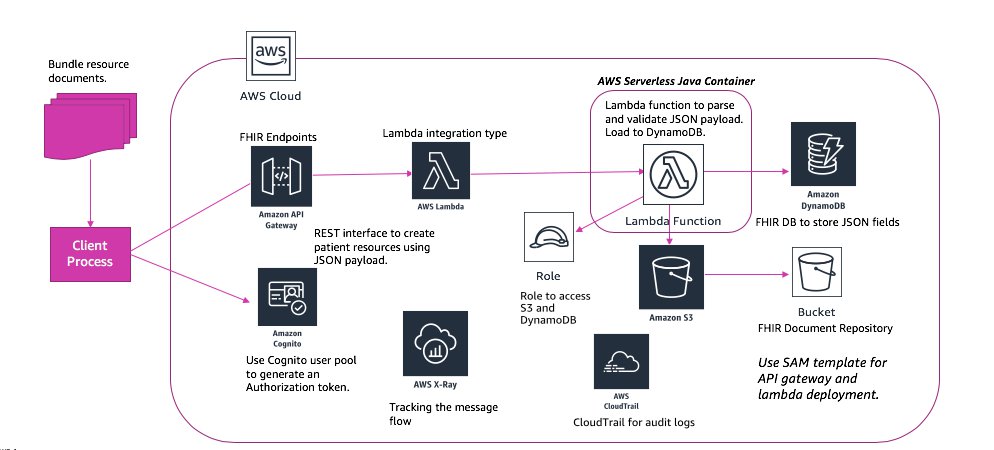AWS Architecture Blog
Category: Learning Levels
One to Many: Evolving VPC Design
Since its inception, the Amazon Virtual Private Cloud (VPC) has acted as the embodiment of security and privacy for customers who are looking to run their applications in a controlled, private, secure, and isolated environment. This logically isolated space has evolved, and in its evolution has increased the avenues that customers can take to create […]
New Issue of Architecture Monthly: Games
This month’s Architecture Monthly magazine is all about games—not Scrabble, not Uno, not Twister, and certainly not hide-and-seek. No, we’re talking the big business of online, multiplayer games. And did you know that approximately 90% of large, public game companies are running on the AWS cloud? Yep, I’m talking Epic (ever heard of Fortnite?), Ubisoft, […]
Building a Serverless FHIR Interface on AWS
Technology is revolutionizing the healthcare industry but it can be a challenge for healthcare providers to take full advantage because of software systems that don’t easily communicate with each other. A single patient visit involves multiple systems such as practice management, electronic health records, and billing. When these systems can’t operate together, it’s harder to […]
Top Resources for API Architects and Developers
We hope you’ve enjoyed reading our series on API architecture and development. We wrote about best practices for REST APIs with Amazon API Gateway and GraphQL APIs with AWS AppSync. This post will cover the top resources that all API developers should be aware of. Tech Talks, Webinars, and Twitch Live Stream The technical staff at AWS have produced a variety […]
Wag!: Why Even Your Dog Loves a Canary Deployment
Since August 26 was National Dog Day, we thought it might be a great time to talk about why Wag!,an on-demand dog-walking, boarding, and pet-setting service that’s available in 43 states and 100 cities, deployed blue-green (or canary) architecture for increased availability and reduced risk using Amazon ECS. Last June, Dave Bullock, Director of Engineering […]
Things to Consider When You Build a GraphQL API with AWS AppSync
September 8, 2021: Amazon Elasticsearch Service has been renamed to Amazon OpenSearch Service. See details. Co-authored by George Mao When building a serverless API layer in AWS (one that provides a custom grammar for your serverless resources), your choices include Amazon API Gateway (REST) and AWS AppSync (GraphQL). We’ve discussed the differences between REST and […]
Improve Productivity and Reduce Overhead Expenses with Red Hat OpenShift Dedicated on AWS
Red Hat OpenShift on AWS helps you develop, deploy, and manage container-based applications across on-premises and cloud environments. A recent case study from Cathay Pacific Airways proved that the use of the Red Hat OpenShift application platform can significantly improve developer productivity and reduce operational overhead by automating infrastructure, application deployment, and scaling. In this […]
Things to Consider When You Build REST APIs with Amazon API Gateway
A few weeks ago, we kicked off this series with a discussion on REST vs GraphQL APIs. This post will dive deeper into the things an API architect or developer should consider when building REST APIs with Amazon API Gateway. Request Rate (a.k.a. “TPS”) Request rate is the first thing you should consider when designing REST APIs. […]
Architecture Monthly Magazine for July: Machine Learning
Every month, AWS publishes the AWS Architecture Monthly Magazine (available for free on Kindle and Flipboard) that curates some of the best technical and video content from around AWS. In the June edition, we offered several pieces of content related to Internet of Things (IoT). This month we’re talking about artificial intelligence (AI), namely machine […]
How to Architect APIs for Scale and Security
We hope you’ve enjoyed reading our posts on best practices for your serverless applications. This series of posts will focus on best practices and concepts you should be familiar with when you architect APIs for your applications. We’ll kick this first post off with a comparison between REST and GraphQL API architectures. Introduction Developers have been creating […]








